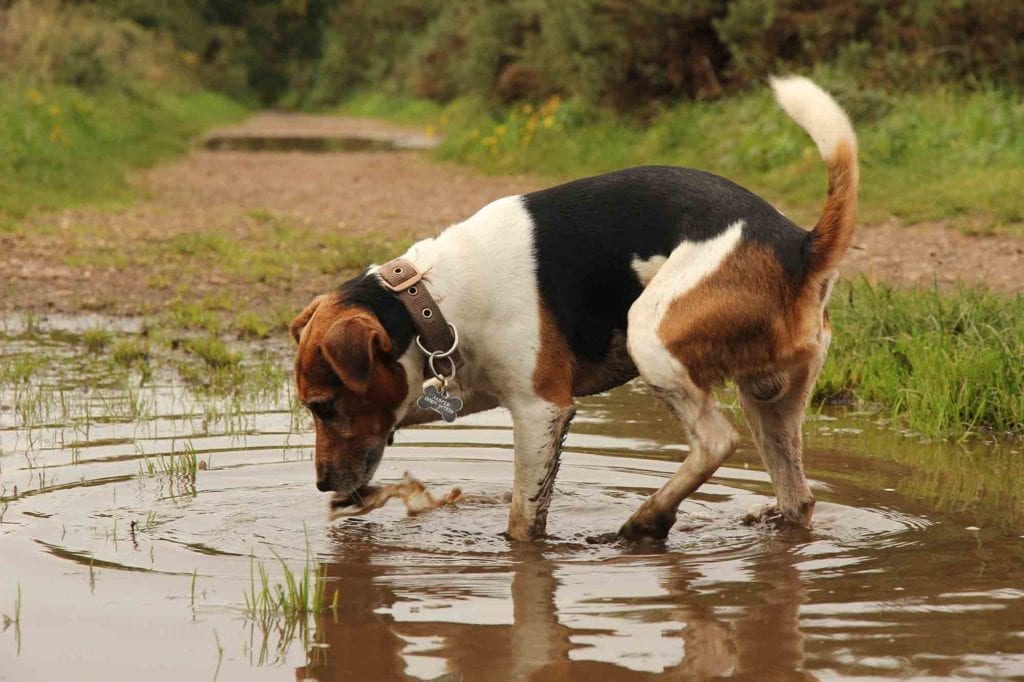A Vicious Virus: Facts About Parvovirus and Protecting Your Pet

Because parvovirus is an illness that can be avoided through vaccination, it’s important for all pet owners to better understand this disease and how to prevent it from affecting our animal companions.
What is Parvovirus?
Canine parvovirus, often shortened to “parvo,” is a viral illness that causes hemorrhagic gastroenteritis, which manifests as sudden vomiting and bloody diarrhea. Other symptoms can include lethargy, anorexia, fever, and dehydration. Parvo can become life-threatening within 72 hours unless treated, and even then, the prognosis may still be serious. In fact, parvovirus is fatal in 16%-48% of cases.
Parvo is spread through contact with an infected animal or feces, as well as contact with water and food bowls, clothing, leashes/collars, and other items of an infected dog (including its owner). Typically, we see more cases during the spring and summer months when more people are at parks and other places with their pets.
Parvovirus primarily attacks puppies and dogs with compromised health who haven’t been fully vaccinated against the disease. Parvo is also more readily seen in areas where several dogs are housed, such as animal shelters or in backyard breeding operations.
Risk factors include:
- Not vaccinating your dog
- Puppies under the age of 20 weeks
- Certain breeds report higher rates, including rottweilers, pitbull terriers, German shepherds, and dobermans
- Dogs with compromised immunity
It’s imperative, however, to stress that any unvaccinated dog can acquire this disease.
Diagnosis and Treatment
Along with careful examination of the clinical signs of parvovirus, there are a few diagnostic tests that can provide a more accurate diagnosis, such as the PCR or ELISA tests and complete blood count. Once a diagnosis is confirmed, the first step is to counter dehydration through the use of IV fluids. Antibiotics, probiotics to replenish “good bacteria” in the intestinal tract, and other supportive treatments are also utilized. With early intervention and treatment, survival rates can be as high as 90 percent.
Steps to Prevention
Knowing the severity of this illness and how easily it can spread, prevention is imperative to containing this deadly virus.
- Keep your pet current on all core vaccines.
- Talk to your veterinarian about reducing your pet’s risk.
- Do not expose your puppy to other dogs and public places until fully vaccinated (make sure to follow up on all boosters).
- Avoid dog parks, daycares, and other facilities in the event of an outbreak or in the case of an unvaccinated or ill pet.
- Practice good hygiene by washing your hands after petting other animals.
- Respond to any symptoms by contacting us right away.
Parvovirus is one of the most frightening illnesses that can harm our pet population, but with vaccination and education, you can keep your pet free from harm. For more information about parvovirus and vaccination, please contact the team at Schertz Animal Hospital.
Share This Article
About
Schertz Animal Hospital
Since 1976, Schertz Animal Hospital has offered the greater San Antonio area outstanding pet care. Our state-of-the-art animal hospital in Schertz, TX compliments our stress-free handling and experienced veterinary staff. Make an appointment online or give us a call at (210) 659-0345 today!
